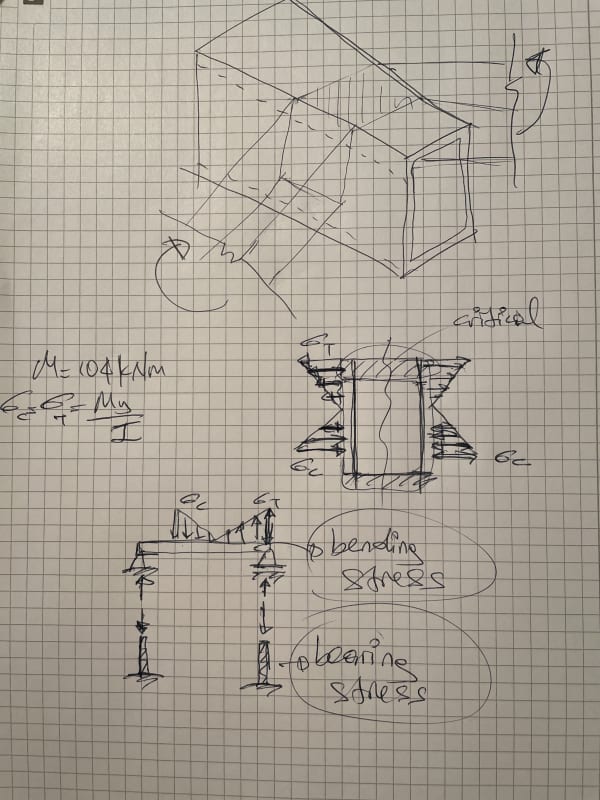otto_eng
Civil/Environmental
- Jun 27, 2017
- 88

I have a question related with checking the stress of the flange of a steel hollow section. I have two hollow sections that are attached to the each side of the main hollow section, and both of the side beams are transferring bending to the main beam through a welded connection. I am checking the stress on the side and the top&bottom plate of the main hollow section just to make sure the main beam is locally not failing. I would like to verify if my approach here is valid. I am basically using the prismatic stress approach, and simplifying the connection as I indicate on the attached sketch.
That would be great if I could get some feedback on my approach here.
Many thanks!
